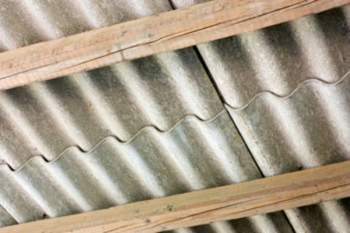
Asbestos Explained

Must Read
What is Asbestos?
Asbestos is a natural mineral that contains six distinct forms. All forms of asbestos possess unique characteristics offer users a seriesof desirable benefits for the construction of commercial and private properties. For instance, when combined with building materials such as cement, asbestos naturally protects and helps strengthen the foundation of a structure.
Asbestos was widely used as a building material throughout the Industrial Revolution and the early 20th century. As a result of the minerals’ inherent characteristics, asbestos was used in seemingly every construction process. Asbestos does not burn and transmits heat poorly; these qualities make Asbestos an insulator against heat.
Furthermore, asbestos is a poor conductor of electricity and therefore useful as an insulator against electrical currents. Asbestos also resists corrosion and was used for exterior applications. The inherent characteristics of the mineral offered construction companies (and individuals aligned with construction efforts) with a strong, yet flexible mineral, which aided in the protection of other building materials.
Dangers of Asbestos
Although asbestos offered construction companies, consumers, and manufacturers numerous intangible benefits, scientific research has proven that chronic contact (and more specifically the inhalation)with asbestos particles can result in the contraction of deadly diseases.
On its own, asbestos represents a minimal threat; however, when the mineral is disturbed it will release toxic particles into the air. When these filaments are inhaled, they stick to the outer linings of the lung and the abdomen. Over time, inhalation of such toxins will alter the cells within the respiratory system and precipitate a deadly disease known as mesothelioma, as well as other lung-based cancers.
Asbestos-related conditions, such as mesothelioma, do not present themselves until at least 15 years after initial contact with the fibers have been made. If infected, the individual will experience severe chest pains, a persistent cough, rust-colored phlegm, severe weight loss, fatigue, and shortness of breath.
Legal Issues Associated with Asbestos
The laws surrounding the use and manufacturing of asbestos-related products are stringently regulated by federal and local governments. The enforcement of such laws became necessary when the number of mesothelioma cases and subsequent compensation trials grew exorbitant in the late 1980s.
If you or a loved one has contracted an asbestos-related condition through an occupation or because of an employer’s failure to meet the mandatory safety protocol instituted by a governmental agency, you may be entitled to receive a settlement through the administration of an asbestos claim.
An asbestos claim is the formal inclusion of the justice system to review a particular obtainment of an asbestos-related disease. Through the use of an asbestos lawyer, an asbestos claim will be filed with the underlying jurisdiction’s civil court. The asbestos claim will state that the individual had unjustly contracted the ailment through constant exposure to an asbestos-based material. Typically, asbestos claims are made against the infected individual’s employer, who is responsible for instituting safety measures to prevent chronic exposure to asbestos-related materials.
In order to receive a favorable settlement, the individual must offer the court a diagnosis of an asbestos-related disease and proof that proper safety precautions were not satisfied. If a favorable settlement is reached the damaged party will receive a monetary package that is meant to recoup a portion of the losses experienced from medical costs, lost wages, and emotional strain.



















